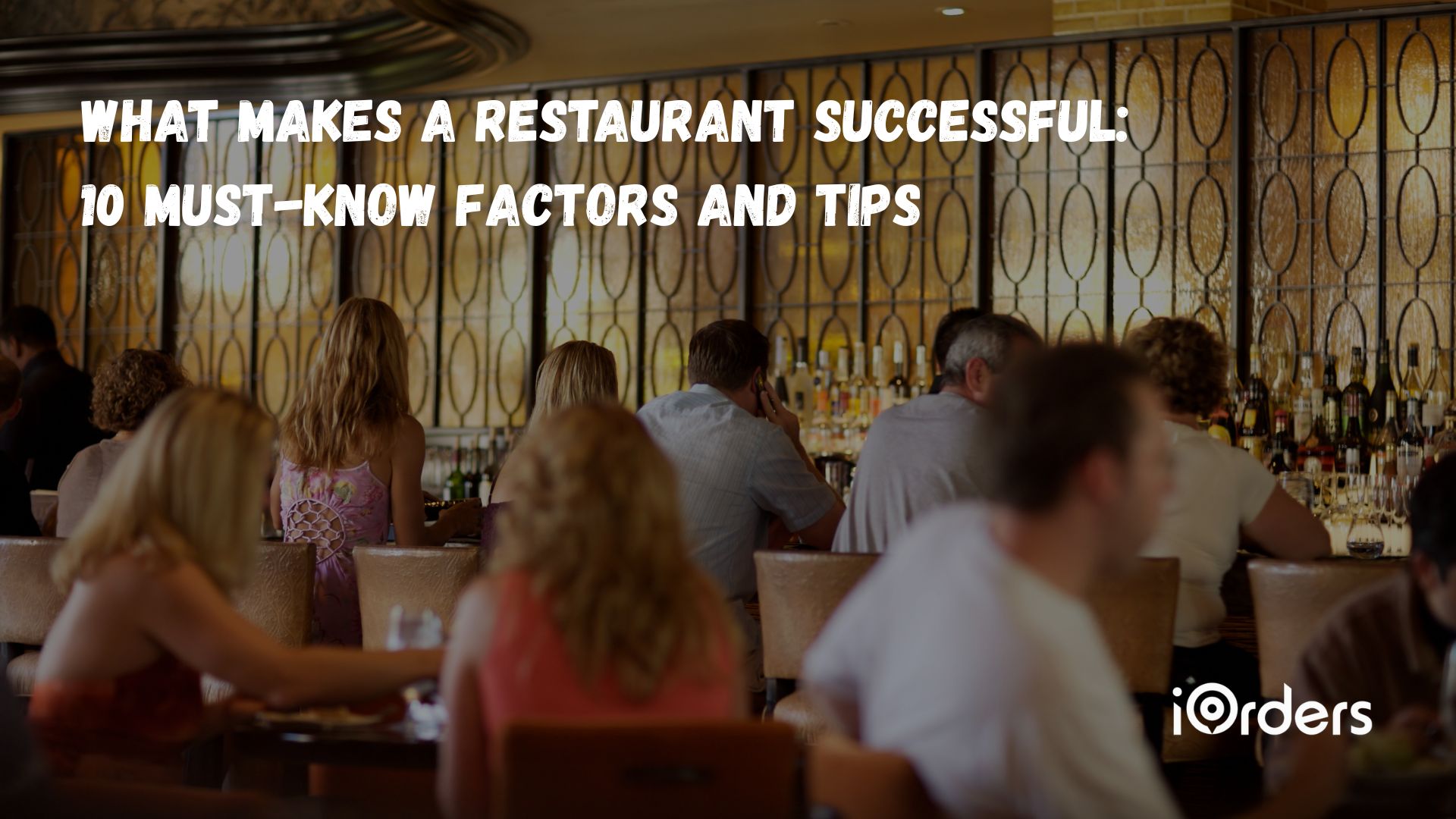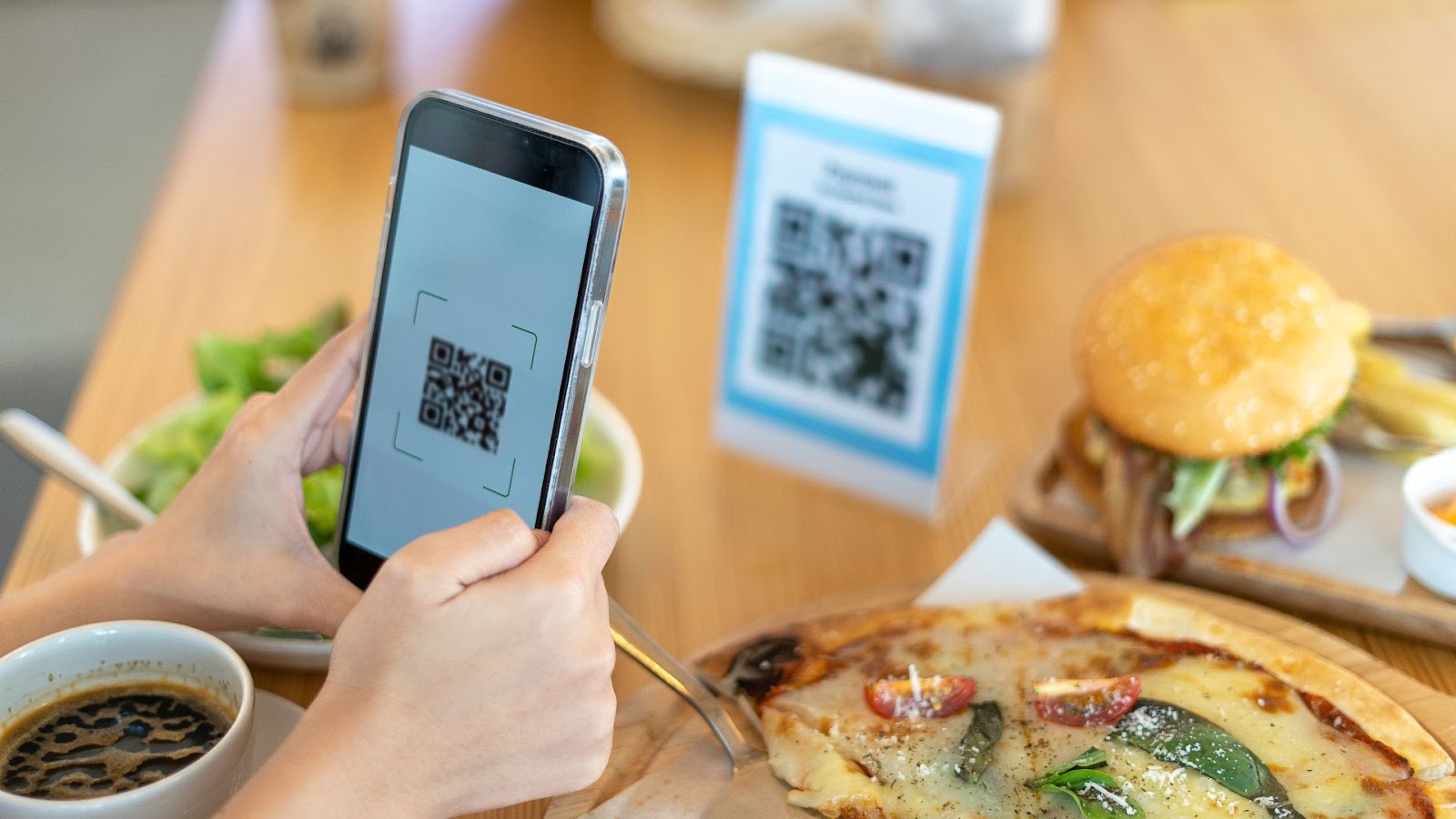August 7, 2025

Many independent restaurants and chains begin with the basics: great food, a unique atmosphere, and outstanding service. But despite these strong foundations, 60% of new restaurants fail within the first year due to overlooked operational challenges and market dynamics.
Behind the scenes, it’s not just about executing a great menu; it’s about mastering cost control, staff management, and customer retention. What makes a restaurant successful is a combination of strategic planning, effective management, and adaptability to market changes.
In this blog, we’ll explore the key factors that contribute to long-term success and provide tips to help your restaurant thrive, even in a competitive industry.

Running a successful restaurant requires a balance of creativity, organization, and customer focus. Beyond having great food, the key to thriving in the competitive food industry lies in considering various operational, marketing, and customer-related factors. Here are the top 10 essential factors that can help set your restaurant on the path to success:
Effective leadership is the backbone of a successful restaurant. A clear vision, strategic decision-making, and the ability to motivate a team are crucial for navigating the challenges of the restaurant industry. Strong management is responsible for overseeing day-to-day operations, handling staff, managing finances, and ensuring that everything runs smoothly.
Studies show that restaurants with strong management teams experience 40% higher sales growth. Good leaders instill a positive company culture.
Pro Tip: Invest in leadership development programs for your managers. Leaders who are trained to handle crises and maintain operational continuity can enhance both employee retention and customer satisfaction, ultimately leading to long-term success.
Food quality is the essence of any restaurant’s reputation. The taste, presentation, and temperature of dishes must meet customer expectations every single time. Consistency in food quality builds trust with your customers and ensures they’ll return. Inconsistent food quality, on the other hand, can result in negative reviews, lost customers, and declining profits.
Pro Tip: Implement a standardized recipe and plating guide for all staff to follow. This reduces inconsistencies and ensures that every dish is prepared and served the same way, whether it's the first or the hundredth order of the day.
Cost management is essential for running a profitable restaurant. Rising food prices, labor costs, and utility bills can quickly eat into profit margins, especially when they aren’t carefully monitored. Successful restaurants employ effective cost management practices to minimize waste, track inventory, and optimize staffing. Financial planning ensures that a restaurant has the resources it needs to handle both peak and off-peak times without running into cash flow issues.
Research shows that restaurants with optimized cost management practices can reduce food waste by up to 20% and labor costs by 10-15%.
Pro Tip: Utilize integrated POS systems and inventory management software to track sales, costs, and stock levels in real-time. This will help you avoid over-ordering ingredients, reduce waste, and manage labor costs.
In the competitive restaurant industry, providing exceptional customer service is paramount. A positive dining experience not only encourages repeat visits but also fosters word-of-mouth referrals. However, delivering consistent service excellence can be challenging. Factors such as staff training, wait times, and order accuracy play significant roles in shaping customer perceptions.
Pro Tip: Implementing a white-label mobile app can streamline ordering and payment processes, reducing wait times and enhancing customer satisfaction. iOrders.ca offers such solutions, allowing restaurants to provide a digital experience that aligns with modern consumer expectations.
A strong, unique brand identity is essential for restaurants that want to stand out in a competitive market. It’s not just about your logo or décor, it’s about the complete customer experience, from the moment they hear about you to their post-dining engagement.
However, many restaurant owners struggle with differentiation, especially in crowded markets where customers are bombarded with options. The challenge lies in creating a consistent experience that aligns with your brand’s core values across all touchpoints, whether it's online, in-person, or on social media.
Pro Tip: With iOrders’ Commission-Free Online Ordering system, you can fully control your customers’ experience, keeping your brand front and center. By offering a branded, online ordering experience, you retain customer loyalty, without third-party fees eating into your profits.
According to a study by the National Restaurant Association, 72% of adults would order from a restaurant that they can visit in person. A restaurant can serve the best food in the world, but if it's located in a hard-to-reach or low-traffic area, it's unlikely to achieve long-term success. Strategic location refers to placing your restaurant in an area with consistent foot traffic and proximity to key customer bases, such as business districts, residential areas, or entertainment hubs.
Pro Tip: Before committing to a location, test demand digitally. Platforms like iOrders enable you to run a delivery-as-a-service model or test your concept with a ghost kitchen before incurring the overhead of a physical location. This allows you to gauge local demand and ensure you're making the right choice before investing in real estate.
The restaurant industry is dynamic and constantly evolving. What’s trendy today might not be tomorrow, so adaptability is a must for long-term success. Whether it’s shifting customer preferences, changes in dining habits, or evolving technology, the ability to adjust your concept or operations in response to these trends can set your restaurant apart from the competition.
For example, the rise of plant-based diets and sustainable dining has pushed many restaurants to adapt their menus to cater to more environmentally conscious diners.
Pro Tip: To stay ahead of trends, adopt technology that enables quick adaptability. Use tools for real-time data collection, customer feedback, and invest in restaurant inventory management software for changing market demands without requiring major shifts in your overall strategy.
One of the most significant challenges restaurants face is employee turnover, which can be high in the food service industry. A well-trained and motivated team is essential for delivering excellent service and smooth operations. Without proper training, employees may struggle with customer service, food handling, or adhering to the restaurant's standards, which negatively affects the overall dining experience.
Pro Tip: Make training a continuous process, not a one-time event. Regularly update your team on customer service skills, new menu items, or changes in safety protocols. Cross-training staff to handle multiple roles can also improve flexibility and reduce labor costs during peak periods.
A strong marketing strategy is essential for attracting new customers and keeping your restaurant top-of-mind for return visits. About 74% of diners rely on social media to decide where to eat, and 90% check a restaurant’s online presence before visiting. Whether through social media, email marketing, or SEO, a consistent and targeted digital marketing plan can boost visibility and drive sales.
Pro Tip: Invest in a digital marketing plan that includes a mix of social media posts, email newsletters, and customer loyalty programs. iOrders' Managed Marketing Services to automate your campaigns, ensuring that you reach your customers with targeted messages and promotions across email, SMS, and social media, without the hassle.
In the restaurant industry, operational efficiency is a key factor in maintaining profitability. From managing inventory and order processing to optimizing staff schedules, improving efficiency in daily operations can reduce costs and enhance the overall customer experience. For instance, 45% of restaurant owners report that labor and food costs are their top financial challenges.
These inefficiencies directly affect the restaurant’s bottom line and the overall customer experience, leading to longer wait times, order inaccuracies, and increased operational costs.
Pro Tip: To enhance operational efficiency, consider adopting an integrated platform that combines order management, inventory tracking, and staff scheduling. iOrders offers a comprehensive solution that allows you to manage orders through one dashboard without switching between apps, spreadsheets, or multiple phones.

iOrders offers a suite of solutions tailored to enhance the efficiency and profitability of your restaurant. By integrating these tools, you can streamline operations, boost customer satisfaction, and drive growth. Here's how iOrders can support your restaurant's success:
By using these features and more, iOrders allows restaurant owners to manage and grow their businesses effectively.
Running a successful restaurant requires much more than great food and service. By focusing on key areas like leadership, consistent food quality, effective cost management, and adaptability to market trends, your restaurant can thrive in a competitive industry. Implementing strategies that focus on operational efficiency, customer experience, and a strong brand identity will help you create a sustainable and profitable business.

To elevate your restaurant’s success, iOrders offers a range of powerful tools to streamline operations. Ready to take your restaurant to the next level? Book a free demo today and discover how iOrders can help you achieve operational excellence and customer loyalty!
A successful restaurant hinges on three core elements: exceptional food quality, outstanding customer service, and a unique ambience. These foundational aspects create a memorable dining experience that encourages repeat business and positive word-of-mouth.
Ghost kitchens and pizzerias are among the most profitable restaurant concepts. Ghost kitchens benefit from lower overhead costs by operating without a physical dining space, while pizzerias enjoy high-profit margins due to the low cost of ingredients and the popularity of pizza.
Labor costs typically represent the largest expense in a restaurant, often accounting for 30-40% of revenue. This includes wages, salaries, benefits, and taxes, making efficient staff management crucial for profitability.
A good profit margin for a restaurant ranges between 10%-15%. However, achieving this requires careful cost control, efficient operations, and strategic pricing to ensure expenses are kept in check while maximizing revenue.
P&L stands for Profit and Loss statement, a financial document that summarizes a restaurant's revenues, costs, and expenses over a specific period. It provides insights into the business's profitability and helps in making informed financial decisions.